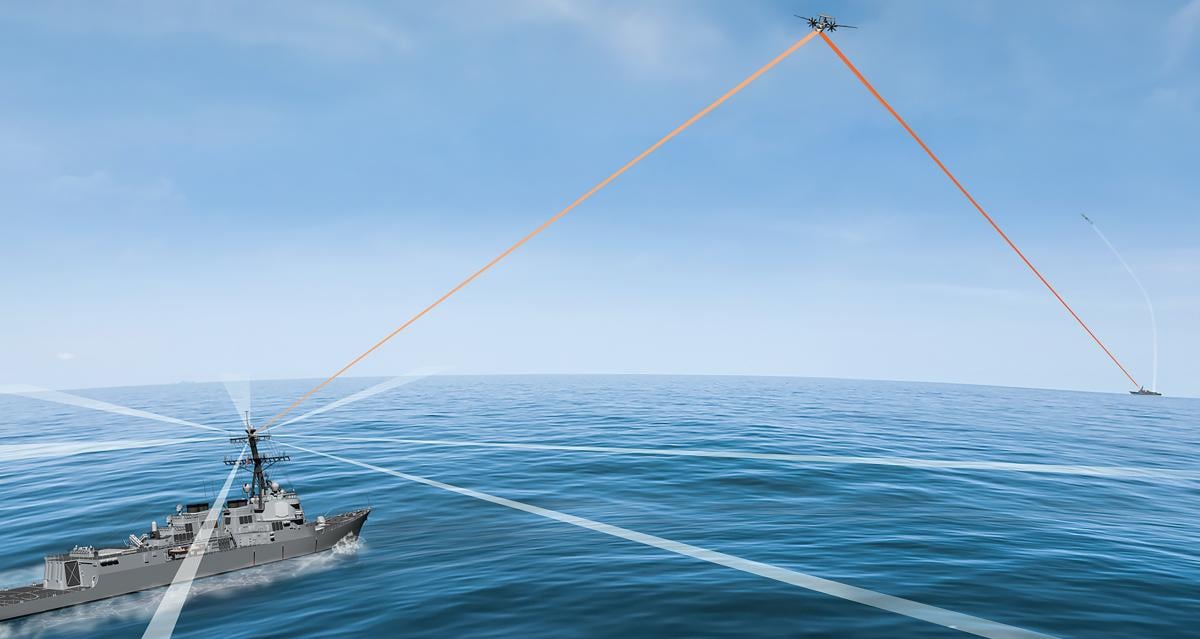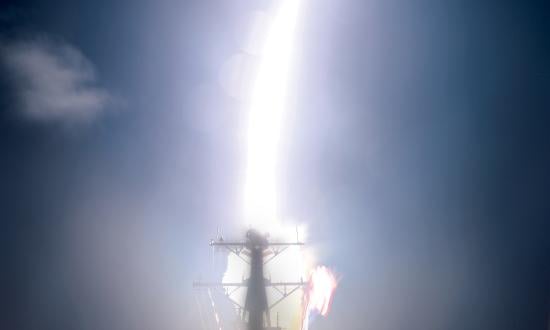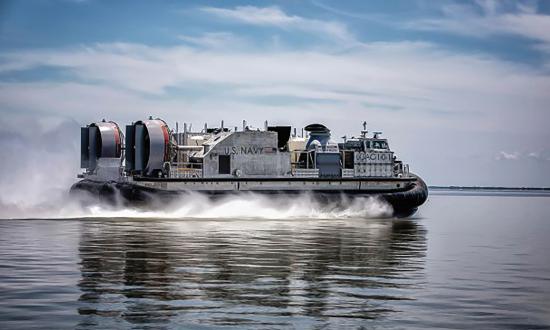Raytheon Technologies has won Navy funding of about $17 million in a modification to a contract for continuing engineering services for the long-deployed Cooperative Engagement Capability (CEC). The March 2021 award follows a now-routine series of CEC updates and renewals of earlier Raytheon contracts. The CEC systems are beginning to provide the long-sought vision of a single integrated air picture, or SIAP—a coherent, integrated data picture for targeting through use of multiple sensors.
Last September, the Navy awarded the company $61 million in contract modifications for new design agent work and “advanced studies, integration efforts, and software sustainment and support” for CEC. That award followed a $32.7 million May 2020 contract for planar array antenna assembly (P3) production requirements for the CEC USG-2B shipboard variant. Options to the contract could increase funding to around $238 million. By 2005, Raytheon had developed the P3, a set of four array faces that replace the previous donut-shaped array. The P3 arrays give 360-degree coverage.
CEC, which started reaching the fleet in late 2001, consists of a CEC processor, data-distribution system, and directional active-array antenna. The system enables CEC-equipped ships and aircraft to share target-track data on airborne targets obtained by many platforms, creating a comprehensive sensor network that can extend far beyond the range of any individual network participant.
The CEC USG-2A and upgraded 2B variants now are installed on Ticonderoga-class cruisers, Arleigh Burke–class and Zumwalt-class destroyers, aircraft carriers, and big-deck amphibious ships. The 3A and 3B systems are also employed on E-2C/D Hawkeye surveillance aircraft, and the CEC is a critical component of the naval integrated fire-control-counter-air (NIFCA-CA) architecture. A Marine Corps USG-4 variant acts as the Corps’ composite tracking network. A USG-7B is designated for sale to Australia, and a USG-10B for Japan.
CEC was developed initially in the 1980s by the Johns Hopkins University Applied Physics Lab as a Cold War initiative to strengthen Navy capability against Soviet air attack. Raytheon’s E-Systems Division adapted the Johns Hopkins concept into something the Navy could field. Raytheon received its first USG-2 low-rate production award in February 1998.
Then the hard part started. The CEC data processor crunched numbers faster than the tactical datalinks could integrate with the cruisers’ and destroyers’ Aegis combat systems; processing of track data by both systems created multiple redundant tracks.
Because CEC-Aegis integration was critical, the Navy required Raytheon and Aegis prime contractor Lockheed Martin to get the systems talking to each other. After extensive difficulties, which kept the cruisers USS Vicksburg (CG-69) and Hué City (CG-66) stuck in Norfolk for months in 1998, the companies got it right. In May 2001, the Block 1 CEC went through a successful operational evaluation. The Navy praised both companies for getting the two systems on the same page.
In February 2003, the Navy announced plans for Block 2. Raytheon and Lockheed Martin teamed for the job, with Raytheon as prime. By 2005, the companies introduced commercial processing technology that enabled replacement of the 2,000-pound, refrigerator-sized data processing unit with a 55-pound terminal. The Block 2 effort started the companies on a path to replace the Navy-proprietary CMS-2 software with commercial C++ programs.
The Flight III Arleigh Burke–class destroyers will be getting the newest CEC; the first four Flight IIIs are now being built, two at Huntington Ingalls and two at General Dynamics Bath Iron Works. CEC also will be installed on the 20 planned Constellation-class frigates to be built by Fincantieri Marinette Marine.
The Navy now is looking beyond the Flight IIIs to the future Large Surface Combatant program, hoping for funding for fiscal year 2028. CEC certainly will be in the integrated combat system mix.





